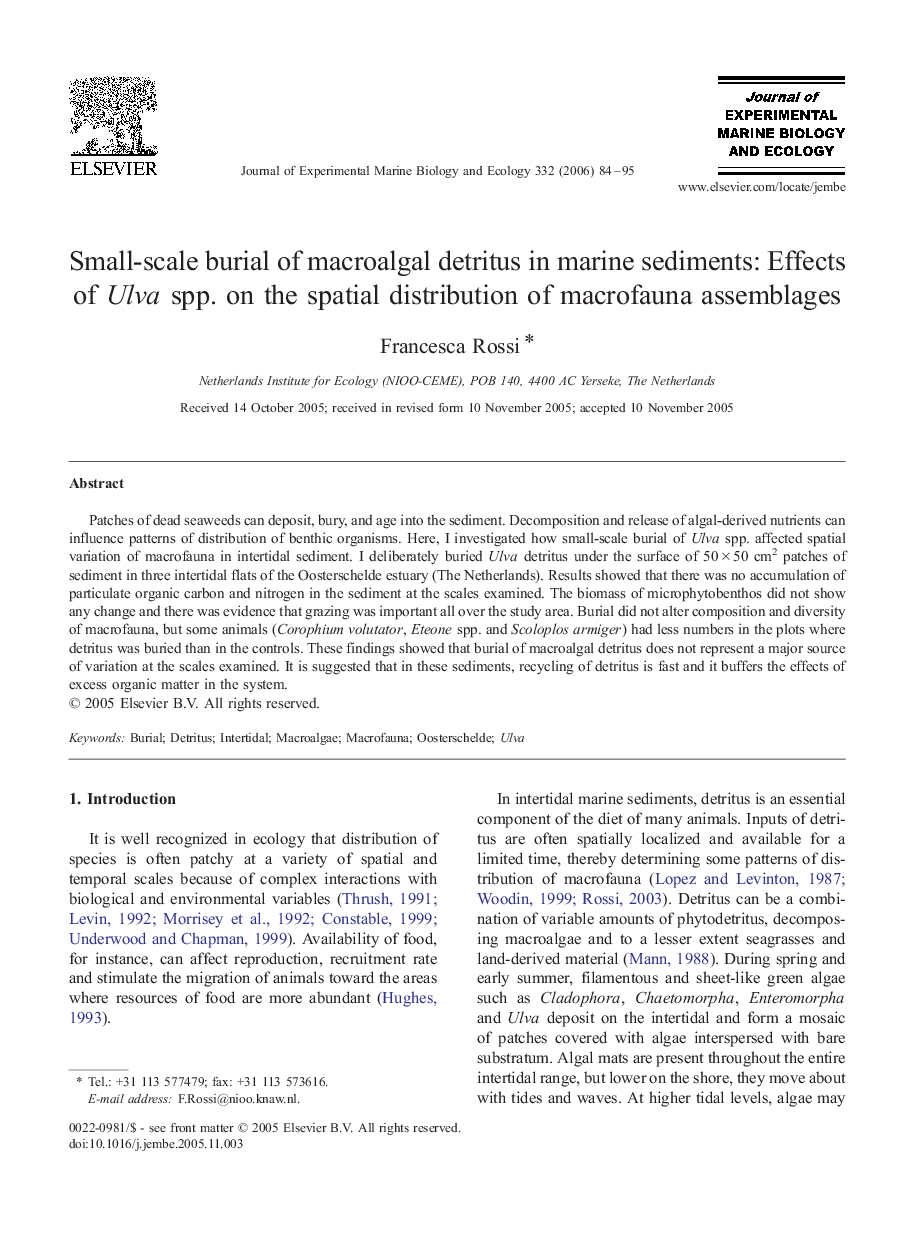| Article ID | Journal | Published Year | Pages | File Type |
|---|---|---|---|---|
| 4398084 | Journal of Experimental Marine Biology and Ecology | 2006 | 12 Pages |
Patches of dead seaweeds can deposit, bury, and age into the sediment. Decomposition and release of algal-derived nutrients can influence patterns of distribution of benthic organisms. Here, I investigated how small-scale burial of Ulva spp. affected spatial variation of macrofauna in intertidal sediment. I deliberately buried Ulva detritus under the surface of 50 × 50 cm2 patches of sediment in three intertidal flats of the Oosterschelde estuary (The Netherlands). Results showed that there was no accumulation of particulate organic carbon and nitrogen in the sediment at the scales examined. The biomass of microphytobenthos did not show any change and there was evidence that grazing was important all over the study area. Burial did not alter composition and diversity of macrofauna, but some animals (Corophium volutator, Eteone spp. and Scoloplos armiger) had less numbers in the plots where detritus was buried than in the controls. These findings showed that burial of macroalgal detritus does not represent a major source of variation at the scales examined. It is suggested that in these sediments, recycling of detritus is fast and it buffers the effects of excess organic matter in the system.
